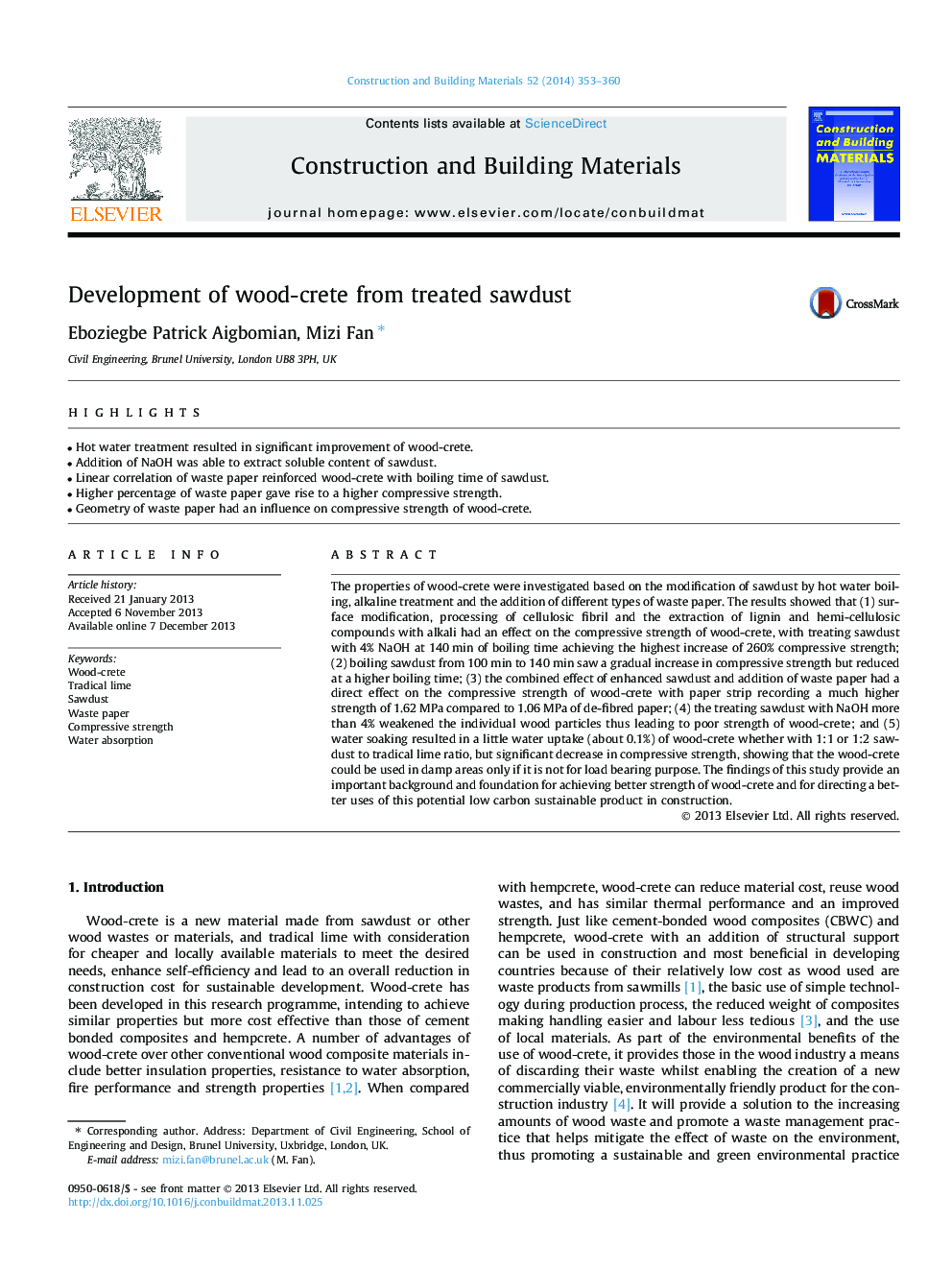| Article ID | Journal | Published Year | Pages | File Type |
|---|---|---|---|---|
| 6724499 | Construction and Building Materials | 2014 | 8 Pages |
Abstract
The properties of wood-crete were investigated based on the modification of sawdust by hot water boiling, alkaline treatment and the addition of different types of waste paper. The results showed that (1) surface modification, processing of cellulosic fibril and the extraction of lignin and hemi-cellulosic compounds with alkali had an effect on the compressive strength of wood-crete, with treating sawdust with 4% NaOH at 140Â min of boiling time achieving the highest increase of 260% compressive strength; (2) boiling sawdust from 100Â min to 140Â min saw a gradual increase in compressive strength but reduced at a higher boiling time; (3) the combined effect of enhanced sawdust and addition of waste paper had a direct effect on the compressive strength of wood-crete with paper strip recording a much higher strength of 1.62Â MPa compared to 1.06Â MPa of de-fibred paper; (4) the treating sawdust with NaOH more than 4% weakened the individual wood particles thus leading to poor strength of wood-crete; and (5) water soaking resulted in a little water uptake (about 0.1%) of wood-crete whether with 1:1 or 1:2 sawdust to tradical lime ratio, but significant decrease in compressive strength, showing that the wood-crete could be used in damp areas only if it is not for load bearing purpose. The findings of this study provide an important background and foundation for achieving better strength of wood-crete and for directing a better uses of this potential low carbon sustainable product in construction.
Related Topics
Physical Sciences and Engineering
Engineering
Civil and Structural Engineering
Authors
Eboziegbe Patrick Aigbomian, Mizi Fan,
